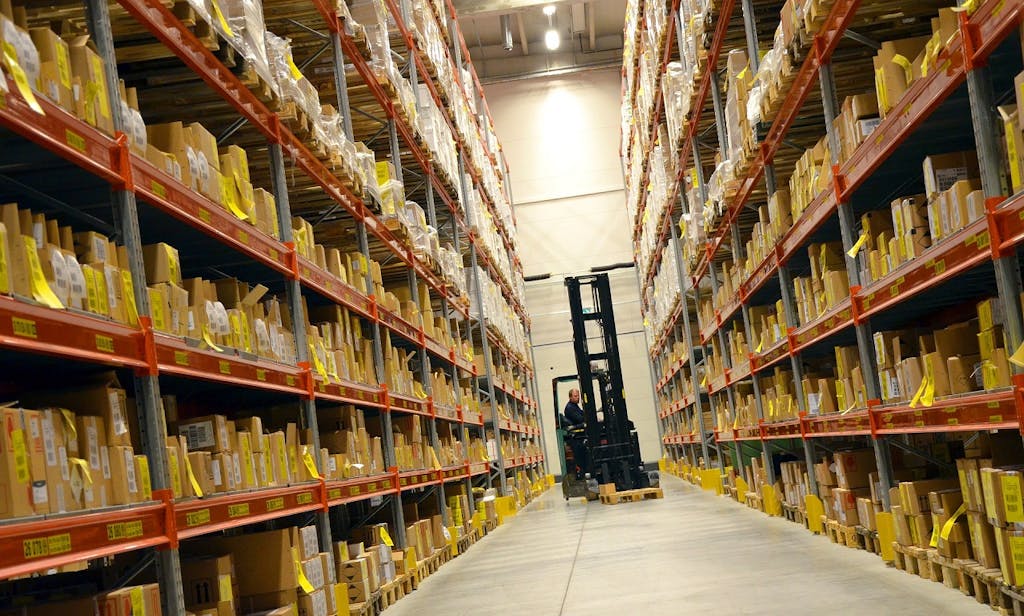Whether you run a construction site, a warehouse, or another business, forklifts are an essential tool in the manufacturing and logistics process in almost every industry.
Forklifts are also complicated and require specialized knowledge to operate and maintain safely. Everything from the hydraulics and motor chain systems that make up the machine must be in excellent working order to minimize the risk of injury—or death.
It’s not uncommon for forklifts to become a safety issue, whether due to mechanical failure or staff negligence. Over 10% of forklifts in use will be involved in an accident, while 34,900 serious accidents and 85 deaths happen every year on average.
These numbers illustrate just how important forklift safety really is, and why you need to ensure your staff are trained and confident in their ability to operate them.
Learn how to avoid potentially fatal accidents and promote a safe work environment by following these forklift safety best practices.
1. Check all forklifts before use
A large number of accidents are due to faulty equipment. Like any other machinery, forklifts suffer from wear and tear damage over time with use.
Ensure that drivers always check their vehicles before starting up the engine. At least twice a day, perform a routine check-up that involves assessing:
- Lights: Clean the lens and make sure they provide enough light to work in a dimly-lit environment.
- Brakes: These components often wear down with age. Check that they are still operational.
- Horn: A forklift horn alerts other workers in the area of potential danger. The horn should always be operational during use.
- Wheel: The operator needs full control over the direction of the forklift at all times. The wheel should be fully functional to allow for fast movements in a pinch.
- Tires: Double check the pressure and traction of the tires, and select tires that work well with the surface the machine will be operating on.

It’s also worth talking directly with the forklift operators regarding safety. Remind them of the potential risks and what they can do to promote a positive work environment around them.
2. Ensure drivers are certified
Poor training is a major catalyst for workplace accidents. Have your forklift drivers licensed in accordance with OSHA standards by providing regular training and demonstrations at least every two or three years.
Did you know that there are actually multiple types of forklifts as defined by OSHA? From pallet jackets to counterbalance-type forklifts, every class has its own weight limit, traveling speed, and intended use case. Knowing your equipment is the first step to achieving safe operation.
Another aspect is making sure loads are securely fastened. Check for balance when first placing a pallet on the loading dock, and travel with the forks as low as possible to maintain stability. Occasionally, ropes and bindings are necessary for heavier loads.
3. Encourage safety for non-drivers too
Even though you aren’t driving the forklift, that doesn’t mean its related safety measures don’t apply to you. Anybody working in the same area as a forklift driver is always at risk. For this reason, non-drivers should:
- Wear a visible vest: Employees likely already have them, but highly visible clothing is a must on the job site. It can be neon or bright orange and reflect light effectively.
- Allow themselves to hear: Some workers might need to wear an earpiece to communicate with other employees. Avoid the use of headphones with two sound drivers, as they can obstruct hearing and prevent workers from hearing the horn of an incoming forklift.
- Stay vigilant: Cables running across the ground, wet floors, and other anomalies should not compromise the safety of workers on the job site.

General cautiousness goes a long way too. A simple awareness of the potential accidents a forklift may cause is enough to encourage better safety practices. Consider hosting a meeting with all the staff regarding this topic.
4. Clean up the working environment
Multiple factors contribute to workplace safety as well, such as lighting, warning signs, flooring condition, and working schedules.
Here are a few tips you can make to improve forklift safety within the general working environment.
- Lighting: This ensures employees can both see and be seen by others. Provide as much light as possible. If you must work at night, remember to check the forklift headlights.
- Signs: These warn employees of hazards like exposed electrical wiring or unattached railings. Signs should always be readable with large typefaces.
- Floors: Dirty, wet, and slippery floors are dangerous. Let drivers know where they’re going when operating a forklift by marking the ground with predetermined lanes.
Achieving operational excellence is largely about creating a safe work environment, which in turn minimizes risk and promotes productivity.
Go above and beyond basic forklift safety with monitorQA
Forklifts are only one aspect of the whole picture, and workplace safety truly is a team effort. Safety should be ingrained in the company culture, where all employees are invested in the same outcome: a safe working environment designed to achieve operational excellence.
Are you looking for ways to improve workplace safety across your organization? monitorQA’s inspection software gives you full visibility into the safety landscape in your workplace, providing powerful functionality for documenting, tracking, measuring, and comparing all aspects of safety across the business.
Book a discovery call today to see how monitorQA is helping other leading companies work towards achieving operational excellence.



